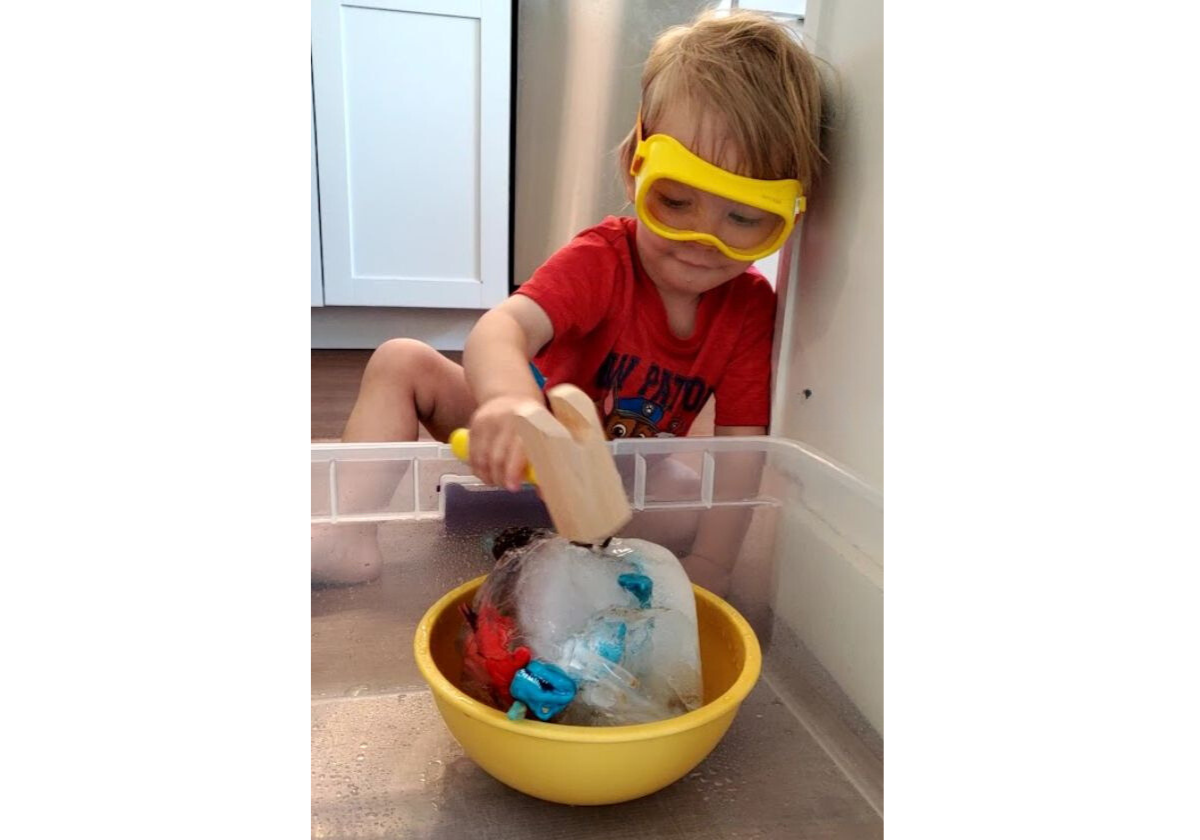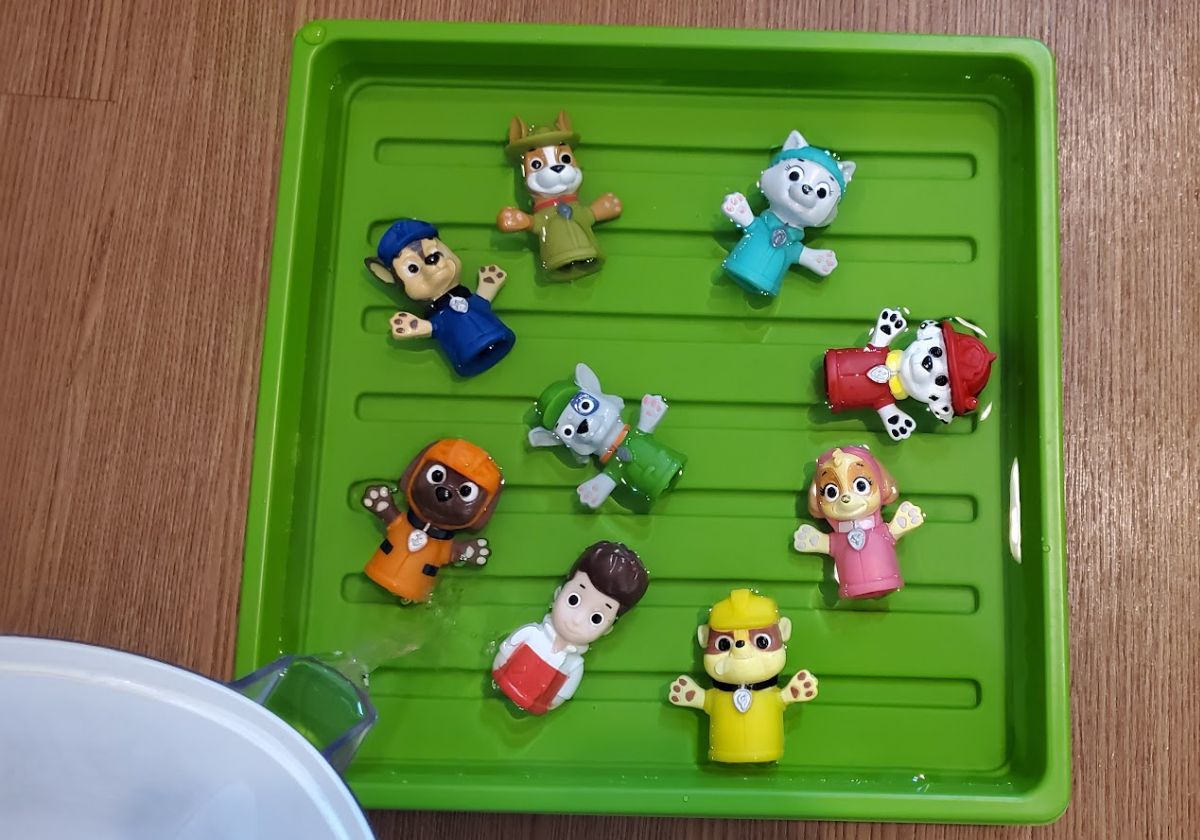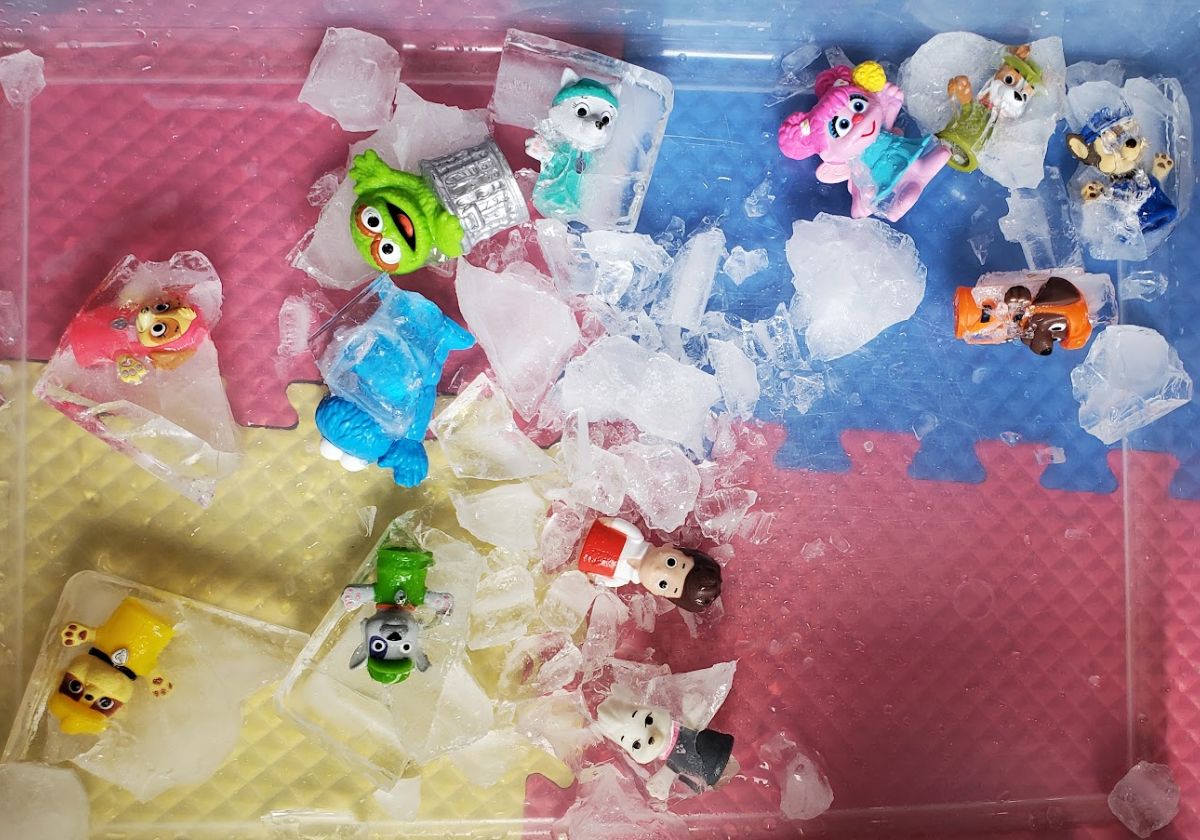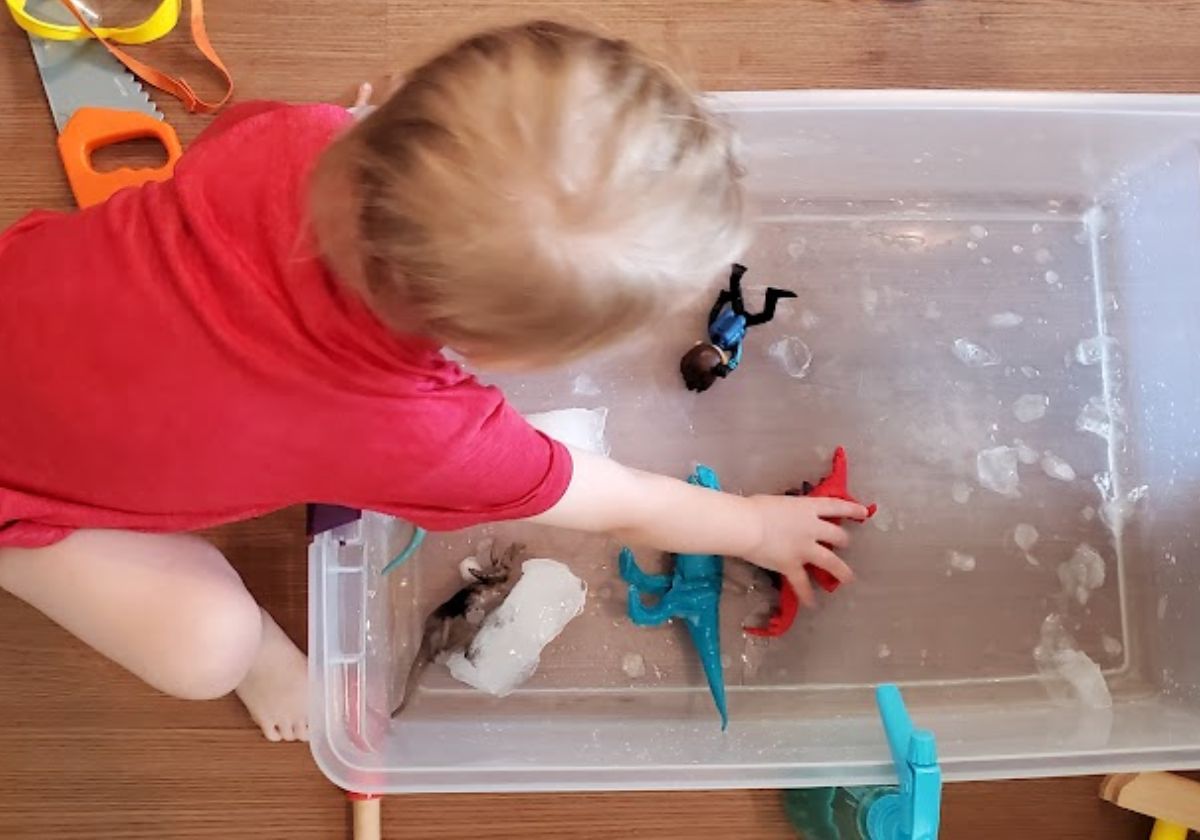Ice sensory activities are so much fun and can help children develop their fine motor and problem-solving skills, heighten their creativity, and even expand their vocabulary — plus it helps keep kids cool on these hot summer days.
While simply playing with ice cubes can entertain for a while, introducing the challenge of rescuing their toys from ice will keep their attention much longer!
This is also a winner in my book because it's so easy! Here's how to create your own ice sensory fun at home.
 |
What you need:
- Waterproof (and hammer-proof) toys
- A flexible tray or container that fits in your freezer (silicone trays or an ice cube tray work great!).
- Melting and chipping age-appropriate tools. Ideas: Toy kid-sized tools, a soft mallet, spoons, spray bottle, eye dropper, a turkey baster, a squeeze bottle, salt.
- Safety gear such as goggles (to shield eyes from any flying ice) and gloves or mittens to protect little hands if they get too cold.
If doing this activity indoors, a tub or large storage container is also necessary to avoid mess!
 |  |
 |
Place your toys in a tub of water and freeze. Then let your kids "rescue" them from the ice!
Directions:
1. Put your small waterproof toys in a freezable container, cover with water, and place in your freezer until the water is frozen.
Mom tips:
I have found that silicone bath toys are perfect for this activity. Some plastic figurines were NOT so perfect because it turned out they had seams in them, so they filled up with water, froze, and then continued to melt and leak long after they were rescued from the ice.
I have tried a few different containers and have noticed that my toddler doesn't have patience like my preschooler for a huge chunk of ice (like a sand castle bucket). But a thinner sheet of ice keeps his attention.
2. Once frozen, remove the chunk of frozen toys from the container by running it under hot water.
3. Place the ice in a large bin or in the grass outdoors. Give your child the desired tools and safety gear, and let the fun begin!
They can experiment with melting the ice and using tools to crack the ice. Let them spoon some salt on the ice. Does it make the ice melt faster?
|
More than just playtime
Wondering how this easy but fun activity helps your child? Here are six benefits from this at-home ice sensory fun activity for young kids:
- Develops fine motor skills: Playing with ice helps children develop their fine motor skills, such as their grip strength, hand-eye coordination, and dexterity.
- Aids in sensory development: Playing with ice stimulates all of the senses, including touch, sight, hearing, and (sometimes!) taste. This helps children learn about the different properties of ice, such as its coldness, slipperiness, and sound when it melts.
- Develops language: Playing with ice can help children learn new vocabulary words, such as "cold," "wet," "melt," and "solid." It can also help them develop their descriptive language skills as they try to describe the different sensations they are experiencing.
- Improves problem-solving skills: Playing with ice can help children develop their problem-solving skills as they try to figure out how to get the ice chunks to do what they want.
- Inspires creativity: Playing with ice can help children use their imaginations as they create different scenarios and stories about why their toys are encased in ice!
- Offers relaxation: Playing with ice can be a calming and relaxing activity for children. The coldness of the ice can help to soothe them, and the repetitive actions of playing with the ice can be very calming.
Kate Fletcher is the publisher of Macaroni KID Binghamton, N.Y.




